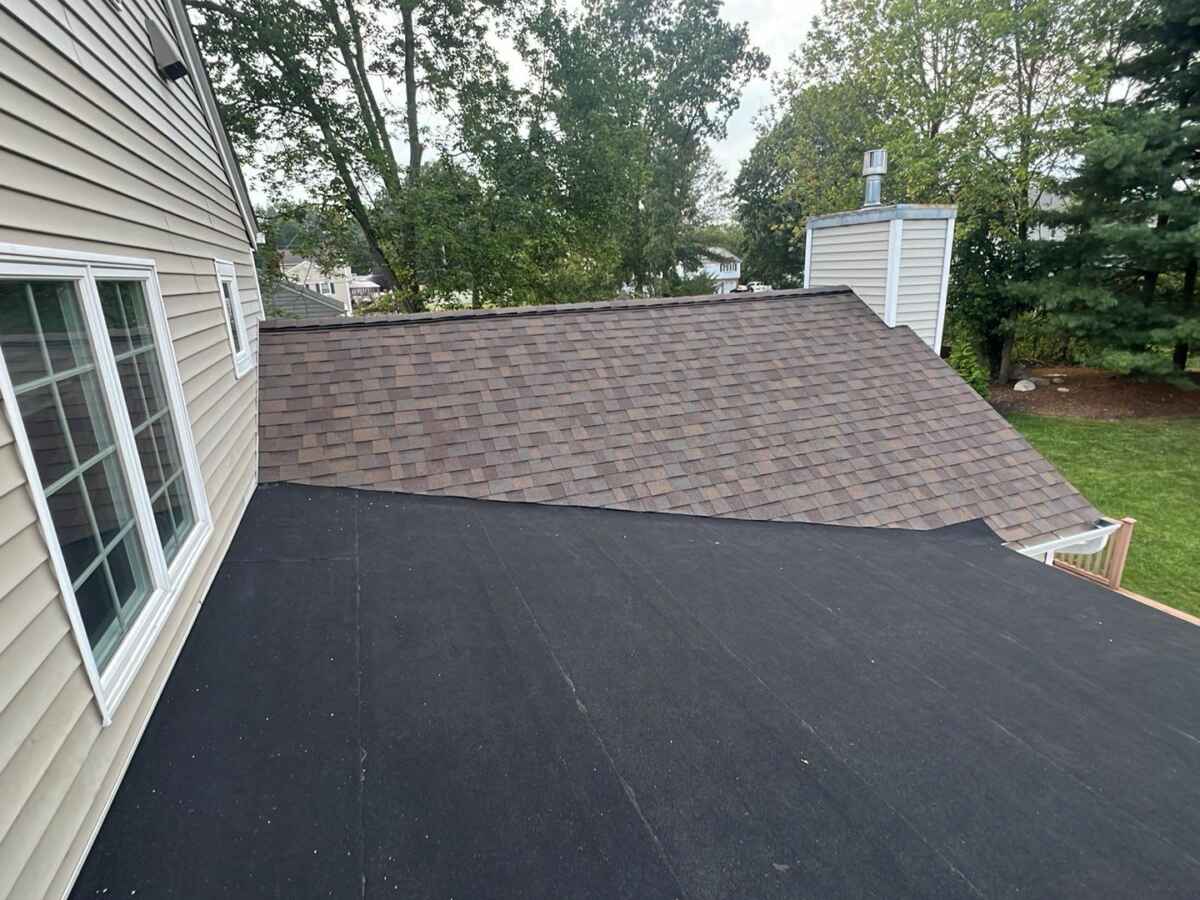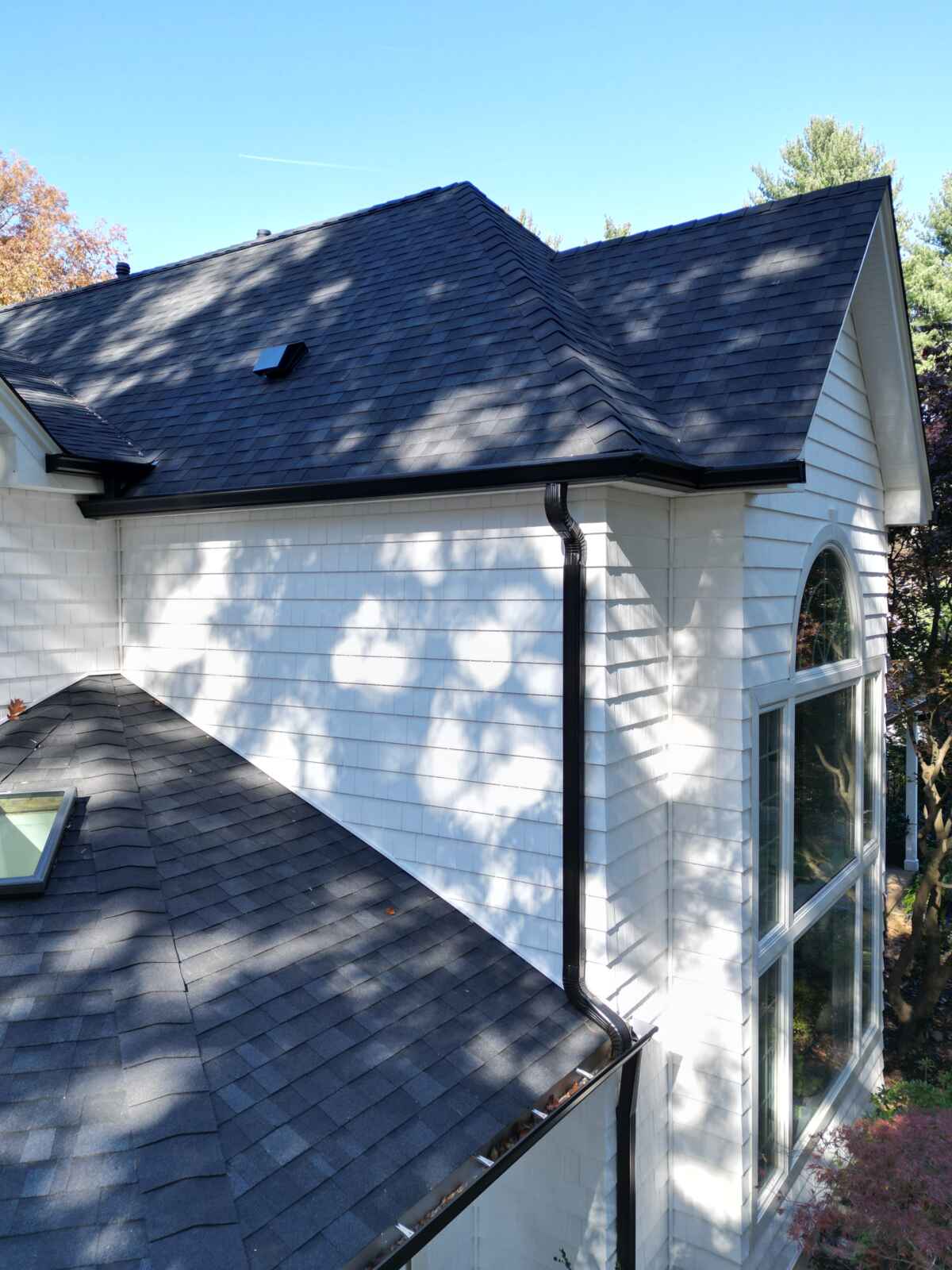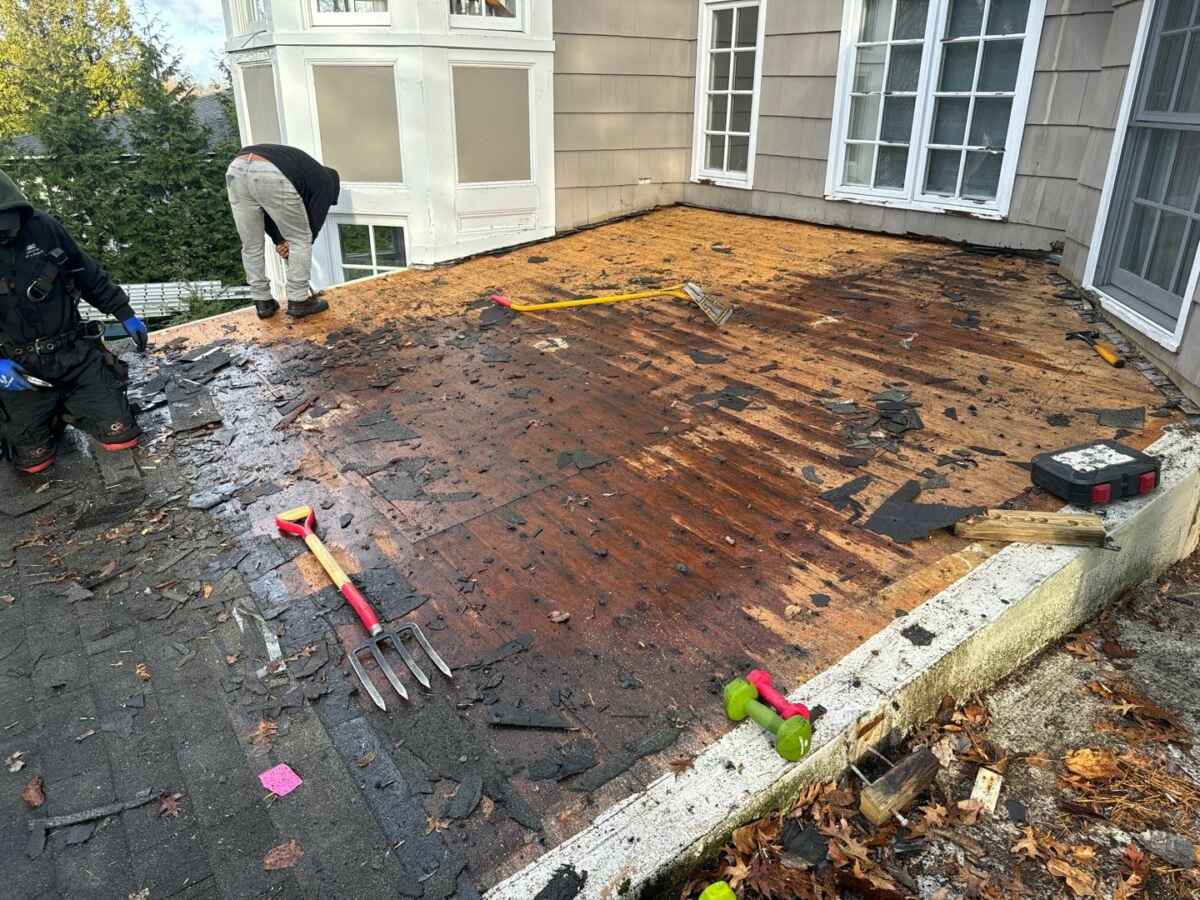Choosing the Right Roofing Material: A Crucial Decision for Low Slope vs. Steep Slope Roofs

When it comes to low-slope roofs, a homeowner’s most crucial decision is selecting an experienced roofer to install the appropriate roofing material. Unlike steep slope roofs that naturally facilitate water runoff, low slope roofs present unique challenges, particularly regarding water shedding. In this blog, we’ll explore why choosing the correct roofing material for low-slope roofs is paramount and how it can impact your roofing system’s longevity, performance, and overall health.
Waterproofing and Ponding Prevention:
Low-slope roofs lack the natural ability to shed water efficiently, making waterproofing a top priority. Choosing a roofing material with exceptional waterproofing properties is essential to prevent water infiltration. Membrane roofing systems, such as TPO, PVC, and EPDM, offer seamless coverage, creating a watertight barrier that guards against leaks and potential damage.
Wind Uplift Resistance:
Low-slope roofs are often more exposed to the force of wind uplift. The chosen roofing material should withstand these forces and remain securely in place. Some materials, like modified bitumen or built-up roofing, are specifically designed to resist wind uplift, providing protection in areas prone to high winds. You should not have shingles on a low-slope roofing area. Some contractors don’t see the actual consequence related to shingles being installed on a low-slope roof. It is extremely common and a main cause for leaks.

When it comes to steep slope roofs, the choice of roofing material is a decision that goes beyond style; it is a pivotal factor that influences durability, weather resistance, and overall performance.
Weather Resistance and Endurance:
Steep slope roofs are more exposed to the elements, including harsh weather conditions such as heavy rainfall, snow, and high winds. The correct roofing material must exhibit exceptional weather resistance and durability to withstand these challenges. Metal roofing, for instance, is praised for its resistance to rust and corrosion, making it a durable choice for steep slope applications.
Ventilation and Insulation Compatibility:
Unlike low-slope roofs, steep-slope roofs often have attic spaces beneath them. The selected roofing material should be compatible with proper ventilation and insulation practices to maintain a healthy and energy-efficient environment within the structure. Materials like asphalt shingles and wood shakes allow for effective ventilation while providing insulation benefits.
Aesthetic Appeal and Architectural Harmony:
Steep slope roofs offer a canvas for architectural creativity and design. The right roofing material contributes to the overall aesthetic appeal of the structure, complementing its style and enhancing curb appeal. Choices like cedar shakes or clay tiles, for example, can add a touch of elegance and timeless charm to a steep slope roof.

At Novalis Roofing & Siding, we recently encountered a situation that underscores the importance of appropriate roof selection, particularly for roofs with a pitch under 2/12. This incident highlights why expert roofing knowledge is crucial for your home’s integrity and longevity.

The Issue:
We were called to inspect a roof pitched below 2/12 where steep slope shingles had been incorrectly installed. This is a significant misstep because a rolled roof system is required for roofs with such a low pitch. The existing shingles were inappropriate for the roof’s angle, leading to severe complications.
The Run-down:
Upon inspection, we discovered extensive water damage. The plywood under the shingles was soaked and rotten due to water infiltration, a direct result of using incorrect roofing materials for the given pitch.
The Overlooked Solution:
The ideal solution for a roof under 2/12 pitch is a rolled roof system designed explicitly for low-pitched roofs. In this case, the previous contractor missed this crucial requirement and failed to install an all Ice and Water shield underlayment as a base layer, which could have provided some level of protection.
Our Findings in Roof Inspections:
We often uncover such issues during roof inspections, especially those conducted during the home-buying process. These inspections are critical in identifying potential problems that might go unnoticed otherwise.
Our Approach:
At Novalis Roofing & Siding, we emphasize the importance of correct material selection and installation methods tailored to each roof’s specific requirements. Our team of experts ensures that every roofing project adheres to industry standards and manufacturer guidelines, regardless of its complexity.
Your Assurance:
Choosing our services means investing in the safety and durability of your home. We prevent costly mistakes by ensuring your roof is a well-engineered system designed for your home’s unique needs.
Avoid Future Problems:
We urge homeowners, especially those purchasing a new home, to get a professional roof inspection. It’s an essential step in safeguarding one of your most significant investments.
Contact us if you’re facing roofing challenges or need a professional inspection for your New Jersey Home. We are here to ensure your roofing system is correctly chosen and expertly installed, offering you peace of mind and long-term value. Novalis Roofing and Siding has over 80 years of experience and is a family-owned and operated business with three generations of roofers. Give us a call for your FREE Home assessment (973) 635-1165

Andrew is the driving force behind our Sales and Marketing team at Novalis. With his infectious positive energy, he forms strong connections with clients, providing expert guidance throughout their projects, from the initial appointment to the final completion. Andrew’s dedication to customer satisfaction ensures that Novalis consistently exceeds their high expectations with top-notch service.


